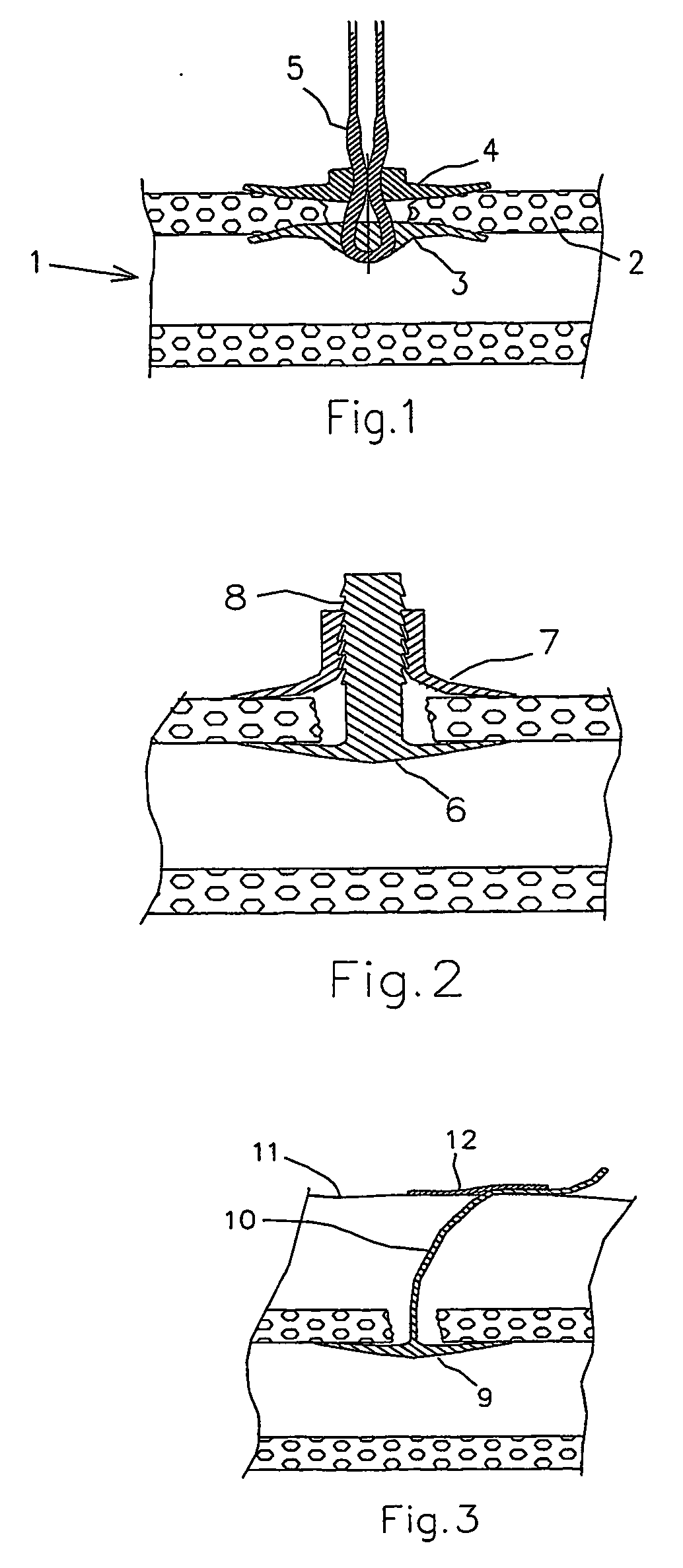Dissolvable medical sealing device
a sealing device and dissolvable technology, applied in the field of wound closure devices, can solve the problems of increasing solubility and absorbability, restricting the flow of blood through the vessel, and unduly long time-consuming for occluders known in the state of the ar
- Summary
- Abstract
- Description
- Claims
- Application Information
AI Technical Summary
Benefits of technology
Problems solved by technology
Method used
Image
Examples
first embodiment
[0021] In FIG. 1 is shown a portion of a vessel 1 in a living body, whether a human or animal body, such as the femoral or radial artery. A puncture has been made through the vessel wall 2, thereby creating an opening, which has to be occluded after the treatment that made the puncture necessary. In FIG. 1, a wound closure device according to the present invention has been positioned to close the puncture wound. The wound closure device comprises a first sealing device 3, which is positioned against the inner surface of the vessel wall 2, and a second sealing device 4, which is positioned against the outer surface of the vessel wall 2. The wound closure device also comprises a fastener 5 in the form of a multifilament 5, which holds the first and second sealing devices 3, 4 together by means of friction locking.
second embodiment
[0022] a wound closure device according to the present invention is illustrated in FIG. 2. The wound closure device comprises a first sealing device 6, which is positioned against the inner surface of the vessel wall, and a second sealing device 7, which is positioned against the outer surface of the vessel wall. In this embodiment, the first and second sealing devices 6, 7 are held together by a saw-toothed guide 8, which extends integrally from the first sealing device 6.
third embodiment
[0023]FIG. 3 illustrates a wound closure device according to the present invention. The closure device shown in FIG. 3 comprises a sealing device 9, through which a suture 10 is threaded. In use, the sealing device 9 is urged toward the inner surface of the vessel wall by simply pulling the suture 10. In order to hold the sealing device 9 in place, the suture is then held and is secured in position on the patient's skin 11, such as by use of a strip of conventional tape 12.
[0024] As mentioned above, sealing devices of the types shown in FIG. 1 to FIG. 3 are conventionally made from materials that are described as being absorbable or biodegradable. Such sealing devices degrade by biological or chemical processes, in which covalent bonds in the molecules of the materials are broken. This can mean, for example, that a polymeric material is hydrolysed so that its molecular weight is reduced. Because of these relatively slow degradation processes, the corresponding degradation times may ...
PUM
| Property | Measurement | Unit |
|---|---|---|
| Time | aaaaa | aaaaa |
| Time | aaaaa | aaaaa |
| Time | aaaaa | aaaaa |
Abstract
Description
Claims
Application Information
 Login to View More
Login to View More - R&D
- Intellectual Property
- Life Sciences
- Materials
- Tech Scout
- Unparalleled Data Quality
- Higher Quality Content
- 60% Fewer Hallucinations
Browse by: Latest US Patents, China's latest patents, Technical Efficacy Thesaurus, Application Domain, Technology Topic, Popular Technical Reports.
© 2025 PatSnap. All rights reserved.Legal|Privacy policy|Modern Slavery Act Transparency Statement|Sitemap|About US| Contact US: help@patsnap.com

